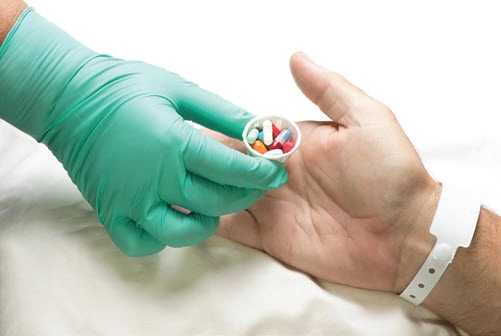Nail Down Medication Error Rate Dos and Don’ts
Check these seven categories for accurate drug administration. Dispensing medication is a common, everyday occurrence in most nursing homes, but the ubiquity of the practice shouldn’t affect the care with which it’s managed. Make sure your team strives for timeliness and accuracy in preparing and dispensing medication to residents. Make sure you’re dispensing medication with these seven things in mind: According to a valid physician’s order, to the correct resident, at the correct time, in the correct dose, by the correct route, according to accepted standards of practice, and according to manufacturer’s recommendations, says Linda Elizaitis, RN, RAC-CT, BS, president and founder of CMS Compliance Group in Melville, New York. Understand These Definitions The State Operations Manual, Appendix PP, is a primary resource for state surveyors, and surveyors use the guidelines therein to evaluate what constitutes an error, as well as the significance of any errors. Here are some important definitions: Medication error: “The observed or identified preparation or administration of medications or biologicals which is not in accordance with: 1. The prescriber’s order; 2. Manufacturer’s specifications (not recommendations) regarding the preparation and administration of the medication or biological; or 3. Accepted professional standards and principles which apply to professionals providing services,” according to the manual. Appendix PP says professional standards can include practice regulations in each state, and health standards established by national organizations, boards, and councils. Significant medication error: An error that causes discomfort for the resident or jeopardizes their safety. When judging whether an error is “significant,” surveyors look at the affected resident’s condition, the category of the drug in question, and the frequency of the error. Appendix PP is straightforward in saying that significance can be both subjective and relative, and provides the example of omitting an ordered laxative for a day, and the resident suffering constipation that lasts a day but does not feel much discomfort — versus constipation that ends up lasting three days and causes fecal impaction, which would directly jeopardize the resident’s health and safety. Medication error rate: Surveyors are determining this rate by calculating the percentage of medication errors observed during a medication administration observation. “The numerator in the ratio is the total number of errors that the survey team observes, both significant and non-significant. The denominator consists of the total number of observations or ‘opportunities for errors’ and includes all the doses the survey team observed being administered plus the doses ordered but not administered. The equation for calculating a medication error rate is as follows: Medication Error Rate = Number of Errors Observed divided by the Opportunities for Errors (doses given plus doses ordered but not given) X 100,” Appendix PP says. Heed These Administration Errors Errors can still occur even when dispensing the correct medication. How the medication is dispensed — whether it’s shaken, rolled, or crushed — can have a significant effect on the accuracy and efficacy of the dose. For example, medication that needs to be shaken but is not shaken sufficiently may mean the distributed dose is either concentrated or diluted. A medication that is supposed to be rolled and is instead shaken may be full of air bubbles, which would affect the dosage. And medications that are crushed despite the medication manufacturer saying that the respective medication should not be crushed can be harmful, “causing physical or chemical incompatibilities that alter therapeutic responses,” Appendix PP says. The resident’s condition can also provide additional situations to monitor. If a resident uses a feeding tube, it’s important to time flushing the tubes with medication administration, and in alignment with any physicians’ orders. Following physicians’ orders is also important when following instructions on whether to crush medication; a physician’s order to crush a medication can overrule the manufacturer’s instructions, if they or a pharmacist can explain why crushing won’t adversely affect the resident or their care. Eye medication is another significant category of medication administration, and knowing how to administer medication safely into residents’ eyes, per the drug manufacturer’s instructions, is important — and something surveyors will be observing. Remember that eye drops can be an issue, in terms of infection control practices, glove use, and handwashing, Elizaitis says. She warns that a big source of exposure is a nurse handing the resident the eye drop dispenser to self-administer, but not finding any mention of self-administration of the drops in the care plan, nor any assessment recorded to evaluate the competency of the resident to do so. Timing is also important in evaluating whether medication disbursement veers into error territory, and this is especially affected by individual actions. Elizaitis notes that nurses should know what to do if something comes up and they cannot dispense medications on time, or if a medication isn’t available. If nurses find themselves unable to time medication administration, do they actually call physicians to check on the effects of holding a dose or dispensing one late? Elizaitis warns that surveyors will follow up on this, even if staff doesn’t.


